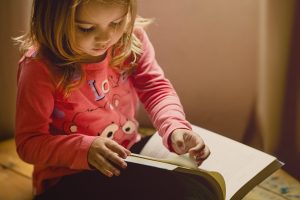With statistics showing that one in two marriages end in divorce, it can be tempting to “normalize” the event. Its frequency, however, in no way diminishes the personal effect that divorce has both on the couple and family, including the children of divorce.
 A divorce is a traumatic occurrence and, much like a serious head-on collision, requires a long road to healing for the victims involved. While this road will look different for every son and daughter, it’s critical to identify that the emotional trauma exists, and will play out in various ways, for years after the divorce papers have been filed. For those seeking guidance, Christian Counseling Pasadena can offer valuable support throughout this healing journey.
A divorce is a traumatic occurrence and, much like a serious head-on collision, requires a long road to healing for the victims involved. While this road will look different for every son and daughter, it’s critical to identify that the emotional trauma exists, and will play out in various ways, for years after the divorce papers have been filed. For those seeking guidance, Christian Counseling Pasadena can offer valuable support throughout this healing journey.
It’s also not a case of whether it will be processed; but rather how this will happen – in a tangible albeit painful way, with counseling and healthy family support, or subconsciously, in a way that will impact a child’s character development and future patterns of behavior in relationships.
Broken in Two
A family is a singular unit, with an action taken by one member affecting every other person in the family. A child’s well-being (emotional, spiritual) is interwoven with the integrity of their parents’ marital wellbeing – the husband and wife have been joined through holy matrimony, and while the break that happens occurs between the mom and dad in divorce; it happens within the child.
While sometimes the analogy of ‘gum on a rug’ is used to describe the messy and incomplete separation caused by a broken marriage, with the children of divorce the breaking effect is internal – they will feel like they’ve been cracked in half into two things. While this emotion may not be felt or expressed explicitly, they will still respond in some way to the tension, because the separation is real.
The effects are far-reaching, often more than are immediately apparent. Depression, anxiety, addiction, anger, compulsions, and other damaging psychological effects may rise to the surface, years after the event, and not even be perceived as being related to the divorce. In some shape or form, children of divorce will be more vulnerable to believing lies about their lovability, their ability to love others, God’s love, or that they’re just not good enough.
 Andrew Root, in his book Children of Divorce, describes divorce as attacking the self, because the self is formed within the belonging and meaning provided by the family. “When it is destroyed, the threat of lost place and lost purpose becomes a reality. Without place or purpose, one becomes a lost self,” he writes.
Andrew Root, in his book Children of Divorce, describes divorce as attacking the self, because the self is formed within the belonging and meaning provided by the family. “When it is destroyed, the threat of lost place and lost purpose becomes a reality. Without place or purpose, one becomes a lost self,” he writes.
The Psalmist in Psalm 38: 7-8 expresses “there is no soundness in my flesh…because of the tumult in my heart”; and indeed, for children of divorce to walk forward in healing, it’s important to acknowledge that they’re coming from a very dark place of confusion.
This does not place judgment on divorced parents or deter those from getting divorced for legitimate reasons (abuse or adultery) but shines a light on the truth of what they’re going through, perhaps without even being aware that they are in the midst of a violent storm.
Common Responses by Children of Divorce
Counselors report four main categories of response by children of divorce. These include:
Acting out
Children lack the emotional language necessary to articulate their pain, and so “bad behavior” is commonly exhibited during and after a couple’s divorce. This can also be linked to behaviors that were not previously tolerated being allowed, as a result of a divided parenting front and emotionally distracted parents.
Parents acting out of guilt for what their child is going through can compensate with unhelpful allowances that take away any remaining sense of security that the child has in their disciplinary boundaries.
Acting like an adult
Children of divorce can easily be treated (often unwittingly) like a companion or adult, a role which they will then assume. In a situation with a single mother, the oldest son can be encouraged to be the “man of the household,” and a daughter can be expected to assume motherly duties if she is the oldest female in the home. Instead of enjoying a normal childhood, these children are forced to grow up too quickly, which robs them in some way of the order of life events that God has planned for them.
Guilt
Break-up situations are rife with guilt, and the children of divorce often do not escape this damaging emotion. It is common for them to feel that they are in some way responsible for causing their parents to separate, and this burden can weigh heavily on their hearts. While it is common in secular counseling to assure children that they’ve done nothing wrong, this often does not alleviate the pain.
 This sort of pain is related to Biblical shame, which a person can feel if they have been associated with wrongdoing, and not necessarily guilty of it. Children of divorce need to see how much God loves them, and the freedom that they have in Christ, to securely attach their identity to Him, and not see themselves as a product of their broken circumstances.
This sort of pain is related to Biblical shame, which a person can feel if they have been associated with wrongdoing, and not necessarily guilty of it. Children of divorce need to see how much God loves them, and the freedom that they have in Christ, to securely attach their identity to Him, and not see themselves as a product of their broken circumstances.
Fear
Hearing that one’s parents are going to get divorced can be the scariest thing a child can go through. This can make them extremely fearful; everything they know as stable and true is going to be uprooted from under them.
While they may not express their fear as related directly to the situation, children of divorce can show separation anxiety towards the remaining parent, fearing that they might leave too, and develop a host of other phobias and fearful tendencies. Biblical counselors will emphasize to children that there is a God who cares about their difficult situation, who sees what is happening, and who has a plan for good things in their life, even if they can only see the bad now.
How Can We Help Children of Divorce?
Divorce is a reality for many people today, and, while devastating for the children involved, the pain and psychological scars they bear can be reduced by the actions taken by the adults in their life during and after the divorce. Studies show that young people who cope most effectively are from homes where parents work together and show a united front, and who incorporate the following principles into their co-parenting strategy:
- Set differences aside
Ex-spouses need to see their role of meeting the needs of their children as separate from their own relationship and be able to put their issues to one side for this purpose. - Focus on the present, not the past
When co-parenting, the past is best left behind. Ex-spouses should devise a new strategy that focuses on what needs to happen going forward.  Rule out criticism of the other parent
Rule out criticism of the other parent
There needs to be a hard-and-fast agreement that verbal attacks and negative attitudes about the other parent in the presence of the children are just not allowed. Children are very perceptive and will pick up even subtle comments said with animosity; so ex-spouses need to do their absolute best to refrain from this behavior as it is very emotionally disturbing for kids.- Agree on discipline and household guidelines
Boundaries and methods of enforcing discipline need to be discussed and agreed on so that there is as little deviation in “the rules” as possible. Set up clear lines of communication for events like school meetings, appointments, etc. - Keep consistency as key
Children who are coping with a divorce will have a propensity to test boundaries, so highlighting consistency as vital will go a long way towards promoting a sense of emotional security for the children. - Communicate changes to adults first
Ex-spouses need to keep each other informed of any changes such as a move, new job, partner, or any other significant information. Making a child the primary source of this sort of news puts them in the middle of an adult communication process and generates fear and tension.
Christian Counseling for Children
Being able to carry out these kinds of actions requires much emotional strength and is probably best supported by counseling for all parties involved; at least until each family member has reached a place where there is a sense of stability and the “new normal” has been embraced. Christian Counseling Pasadena can be a helpful resource in this process, providing guidance for healing and coping. There is hope for both parents and children of divorce, but it requires much intentionality and the help of the Holy Spirit above all.
“On a Walk”, Courtesy of Kevin Gent, Unsplash.com, CC0 License; “Reading a Book”, Courtesy of Jonathan Borba, Unsplash.com, CC0 License; “Sitting on a Hammock”, Courtesy of Sr. Janko Ferlic, Unsplash.com, CC0 License; https://unsplash.”Walking in the Fields”, courtesy of Annie Spratt, Unsplash.com, CC0 License
-
Kate Motaung: Curator
Kate Motaung is the Senior Writer, Editor, and Content Manager for a multi-state company. She is the author of several books including Letters to Grief, 101 Prayers for Comfort in Difficult Times, and A Place to Land: A Story of Longing and Belonging...
DISCLAIMER: THIS ARTICLE DOES NOT PROVIDE MEDICAL ADVICE
Articles are intended for informational purposes only and do not constitute medical advice; the content is not intended to be a substitute for professional medical advice, diagnosis, or treatment. All opinions expressed by authors and quoted sources are their own and do not necessarily reflect the opinions of the editors, publishers or editorial boards of Stone Oak Christian Counseling. This website does not recommend or endorse any specific tests, physicians, products, procedures, opinions, or other information that may be mentioned on the Site. Reliance on any information provided by this website is solely at your own risk.





